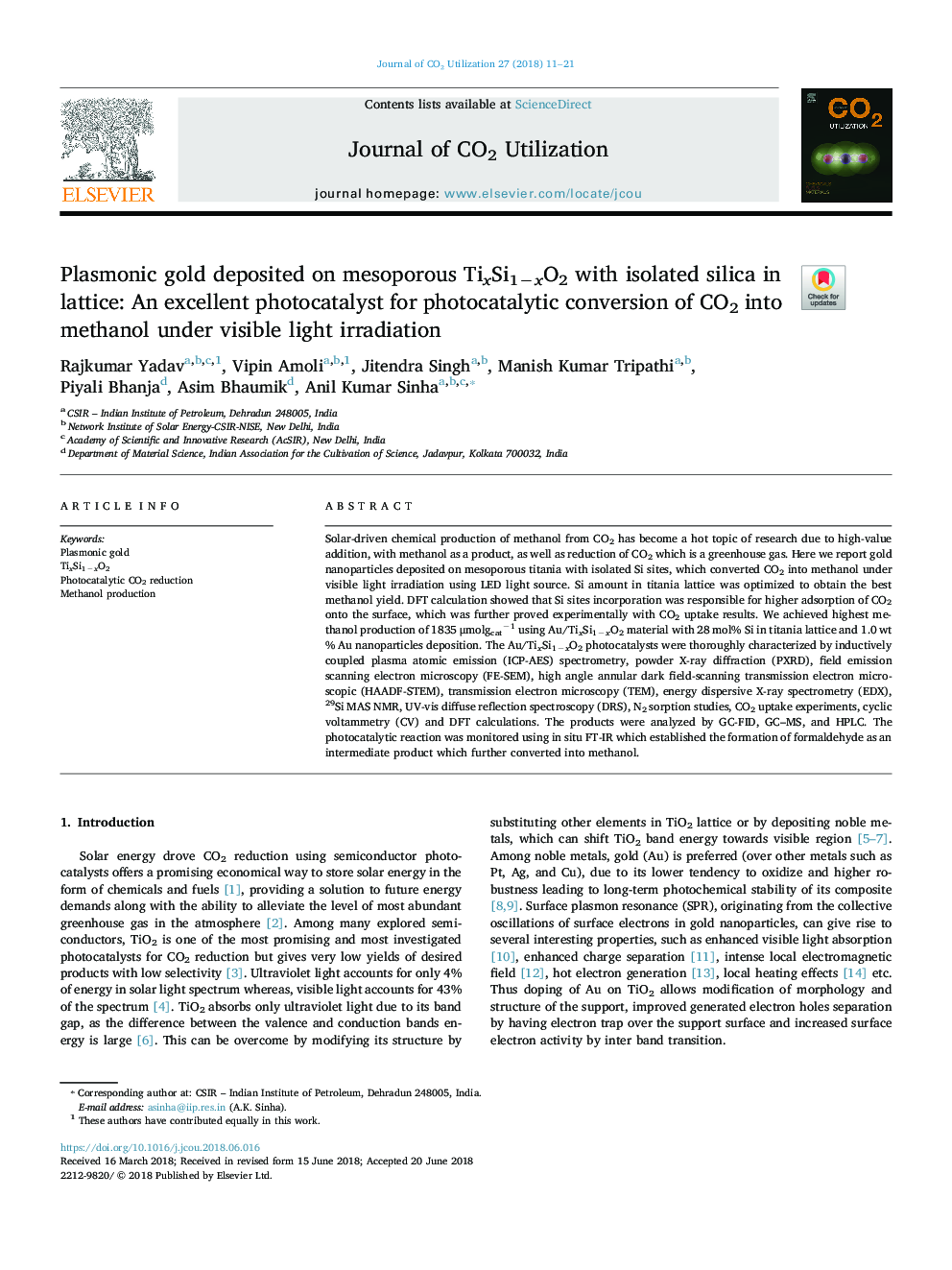| Article ID | Journal | Published Year | Pages | File Type |
|---|---|---|---|---|
| 6528324 | Journal of CO2 Utilization | 2018 | 11 Pages |
Abstract
Solar-driven chemical production of methanol from CO2 has become a hot topic of research due to high-value addition, with methanol as a product, as well as reduction of CO2 which is a greenhouse gas. Here we report gold nanoparticles deposited on mesoporous titania with isolated Si sites, which converted CO2 into methanol under visible light irradiation using LED light source. Si amount in titania lattice was optimized to obtain the best methanol yield. DFT calculation showed that Si sites incorporation was responsible for higher adsorption of CO2 onto the surface, which was further proved experimentally with CO2 uptake results. We achieved highest methanol production of 1835â¯Î¼molgcatâ1 using Au/TixSi1âxO2 material with 28â¯mol% Si in titania lattice and 1.0â¯wt% Au nanoparticles deposition. The Au/TixSi1âxO2 photocatalysts were thoroughly characterized by inductively coupled plasma atomic emission (ICP-AES) spectrometry, powder X-ray diffraction (PXRD), field emission scanning electron microscopy (FE-SEM), high angle annular dark field-scanning transmission electron microscopic (HAADF-STEM), transmission electron microscopy (TEM), energy dispersive X-ray spectrometry (EDX), 29Si MAS NMR, UV-vis diffuse reflection spectroscopy (DRS), N2 sorption studies, CO2 uptake experiments, cyclic voltammetry (CV) and DFT calculations. The products were analyzed by GC-FID, GC-MS, and HPLC. The photocatalytic reaction was monitored using in situ FT-IR which established the formation of formaldehyde as an intermediate product which further converted into methanol.
Related Topics
Physical Sciences and Engineering
Chemical Engineering
Catalysis
Authors
Rajkumar Yadav, Vipin Amoli, Jitendra Singh, Manish Kumar Tripathi, Piyali Bhanja, Asim Bhaumik, Anil Kumar Sinha,
